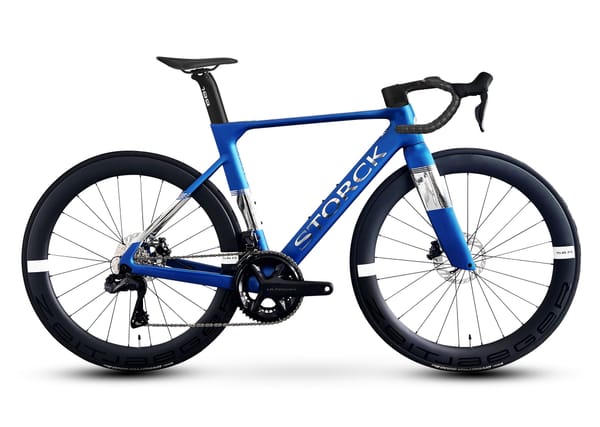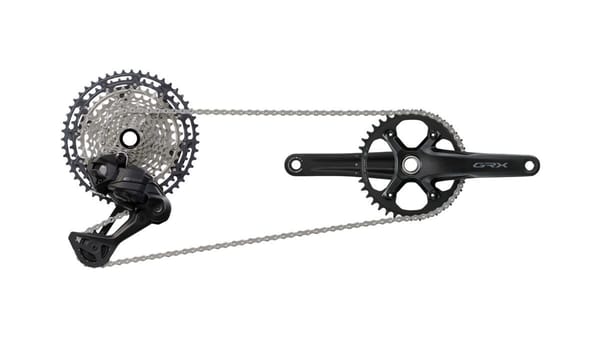The Repetition Rut: Is Your "Healthy" Diet Sabotaging Your Performance?
Are you stuck in a healthy eating rut? Discover why dietary variety is crucial for your gut health and performance, and learn simple, practical strategies to diversify your meals without the overwhelm.

You’ve got your system down. Overnight oats for breakfast, a reliable rotation of three killer dinner bowls, and a go-to lunch spot that never fails. You're busy, you're training hard, and you've found a handful of healthy meals that are easy, tasty, and don't require hunting down an obscure form of leek at three different grocery stores. Congratulations, you've achieved nutritional efficiency.
But a nagging thought persists: Am I missing something? If you're eating the same nutrient-dense foods over and over, is that actually... bad?
The short answer is, it’s not ideal. While consistency is king in training, a little bit of planned chaos in your diet can be the key to unlocking better health and performance. The goal isn't to become a gourmet chef overnight, but to think more like a clever general manager for your gut.
The Variety Verdict: Why Your Gut Gets Bored
The main reason to diversify your diet comes down to a bustling metropolis of trillions of microorganisms living in your gut: your microbiome. Think of it as a highly specialized workforce. When you consistently eat the same foods, you're only employing the microbes that specialize in digesting those specific things. The other specialists? They get laid off, pack their bags, and leave town.
A less diverse microbiome can lead to a host of issues for an athlete:
- Poor Nutrient Absorption: A varied team of microbes is better at extracting the full spectrum of vitamins and minerals from your food.
- Increased Inflammation: A robust gut is a key line of defense against inflammation.
- A Fragile Race-Day Stomach: A gut that's only accustomed to a few inputs is more likely to rebel when you start pounding 100+ grams of carbs per hour during a hard event. A more diverse, resilient microbiome is better equipped to handle the stress of race-day fueling.
Beyond the microscopic, there's the simple reality of palate fatigue. That amazing quinoa bowl you love will, eventually, become the bane of your existence if you eat it for the 400th time. Variety keeps food interesting, which makes consistent, healthy eating a sustainable practice rather than a chore.
The "Swap, Don't Overhaul" Strategy
Okay, so variety is important. But nobody has time to thumb through a cookbook for every meal. The secret isn't a complete overhaul; it's the strategic swap. Keep your staple meal "templates"—the bowls, the salads, the overnight oats—and just start subbing in new players.
Simple Swaps for Big Gains:
- Protein Pivot: If your go-to is grilled chicken, try salmon or ahi tuna one night to get a dose of anti-inflammatory omega-3 fatty acids. Canned tuna or salmon is a budget-friendly, high-protein hack that can be added to almost any salad or bowl.
- Fruit & Veggie Rotation: Instead of the same craisins in your oats, use seasonal fresh fruit or a handful of frozen wild blueberries (which often retain more nutritional value than "fresh" berries that have traveled a long way).
- Embrace Convenience (Smartly): Chopping sweet potatoes is an arm workout in itself. Buy them pre-chopped and frozen and toss them in the air fryer. Frozen rice packets that steam in the microwave in three minutes are a game-changer for quick meal assembly. Let the grocery store do some of the prep work for you.
The goal is to introduce new inputs with minimal extra effort. Even trying one new recipe a month can dramatically expand the portfolio of nutrients you're delivering to your body.
Nerves on the Start Line: Taming the Pre-Race Tummy
Now let's talk about the opposite of variety: the highly specific, often bland world of pre-race fueling. For many athletes, pre-race nerves manifest as a stomach in full-scale rebellion. The cause is rarely the acidity of a banana; it's the adrenaline and anxiety that wreak havoc on your digestive system.
When your body is in fight-or-flight mode, it diverts blood away from the stomach, effectively hitting the pause button on digestion. Food just sits there, which is a recipe for nausea.
The Pre-Race Nutrition Rules for a Nervous Gut:
- Liquids Are Your Best Friend: Liquid carbs (like a high-carb drink mix) are the easiest and fastest thing for your body to digest. If you anticipate a nervous stomach, make a concentrated bottle your primary fuel source.
- Ditch Fat, Fiber, and Protein: On race morning, these nutrients are not your friends. They slow digestion significantly. This is the one time when white rice is better than brown, and cream of wheat is a better choice than steel-cut oats.
- Embrace the Bland: Your goal is simple, easily accessible energy. Think like a 10-year-old on summer vacation: simple cereals, white bread, maybe some King's Hawaiian rolls. It's a temporary, performance-focused strategy. You can eat your kale salad after you cross the finish line.
This isn't your everyday nutrition plan; it's a specific protocol for a specific, high-stress situation. Periodize your nutrition just like you periodize your training.





